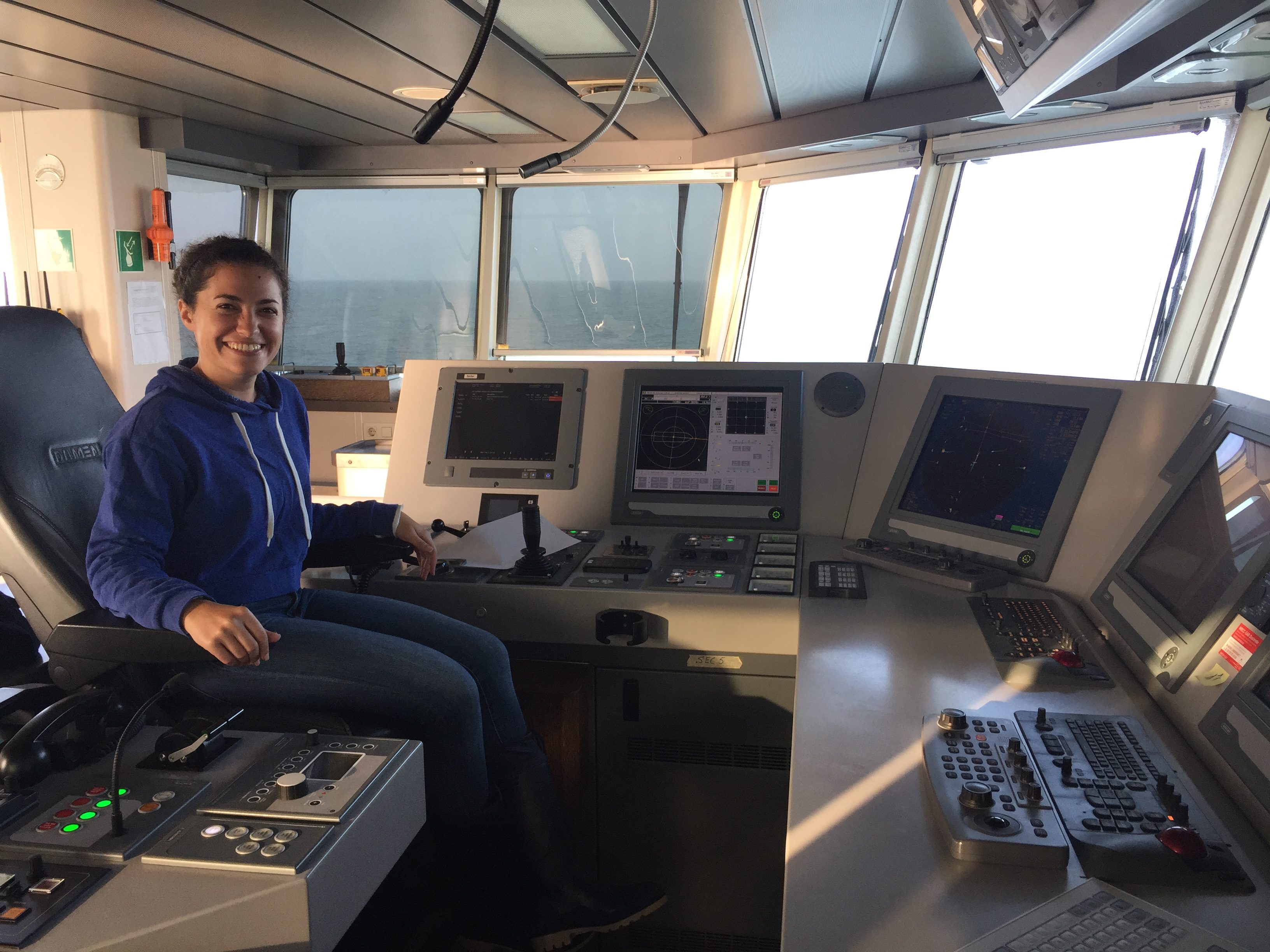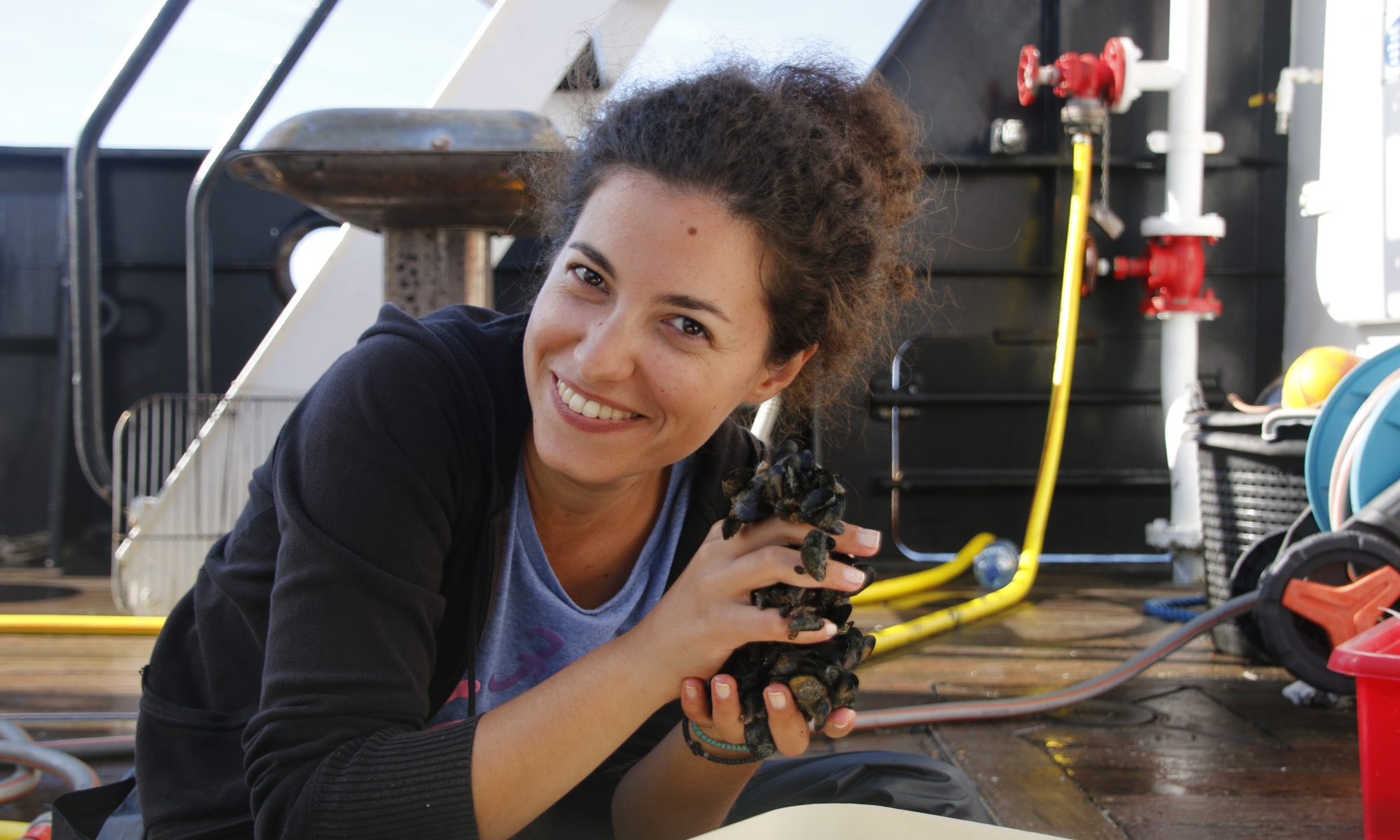The rapidly developing offshore wind industry in the North Sea gives rise to concerns on the impact of wind turbines on the marine environment, including effects on ecosystem functioning. In a PhD study promoted by Ghent University and the Royal Belgian Institute of Natural Sciences, Ninon Mavraki studied the food-web ecology of offshore wind farms. The results show that they do influence the local food web properties, with the occurrence of fouling organisms slightly reducing the local annual primary producer (phytoplankton) standing stock and at the same time being an important food resource for certain fish species. Moreover, the importance of erosion protection layers around wind turbines was highlighted in this thesis, with high food web complexity, invertebrate species exploiting a wider range of food resources, and certain fish species remaining in the area for a prolonged time to feed.
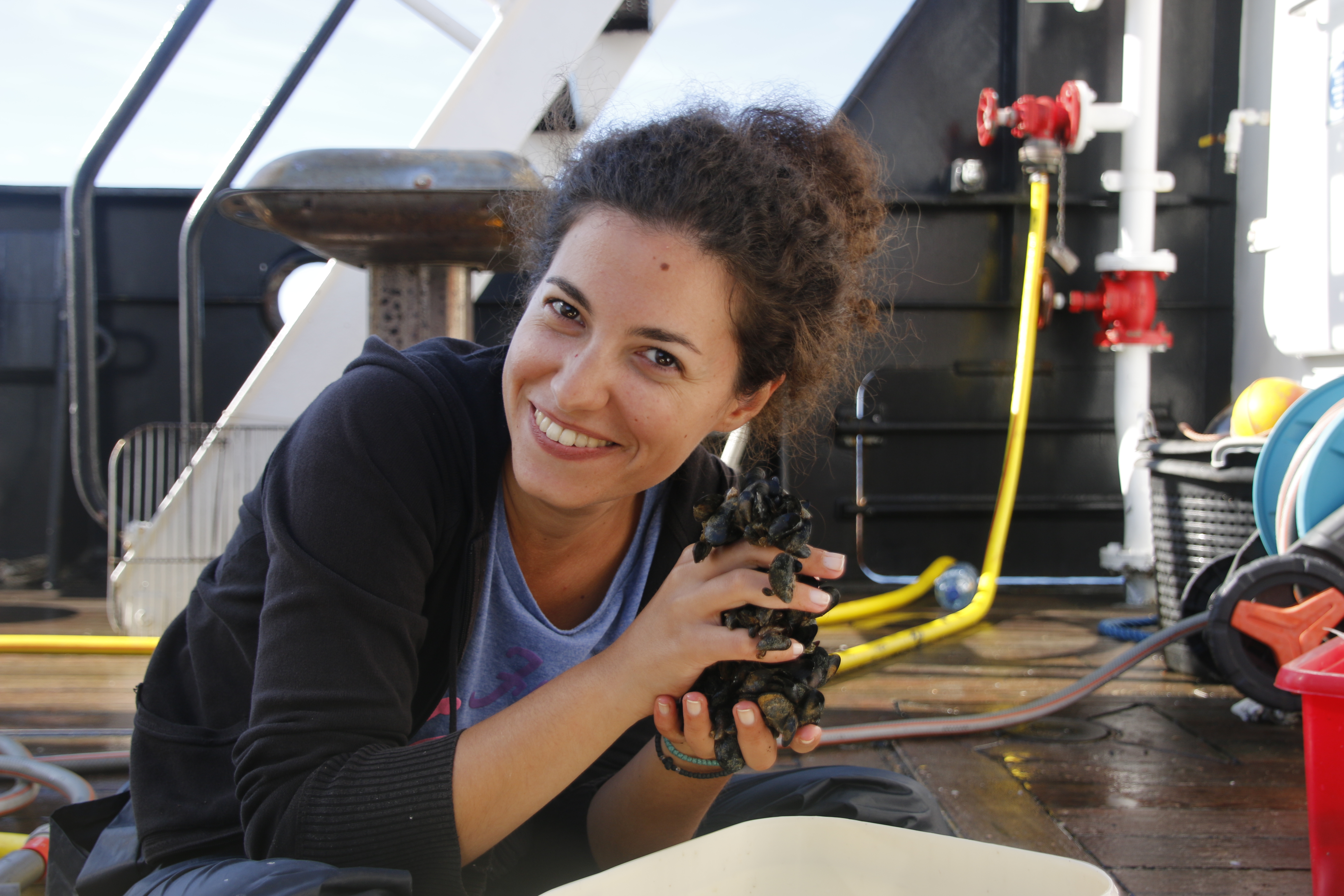
In order to meet the growing demand for sustainable energy, the offshore wind industry is rapidly developing in the North Sea. As installing offshore wind turbines means introducing artificial hard substrates to soft-bottom areas, the practice has the potential to induce changes to the marine environment. Multiple vertebrate and invertebrate species colonise these structures. These don’t only change the local biodiversity but also influence the surrounding environment. These observations give rise to questions about the magnitude and mechanisms of these effects, including effects on ecosystem functioning.
In her PhD thesis, Ninon Mavraki investigated the effects of offshore wind farms on the local food web at two levels: a detailed food web structure on a gravity-based foundation in the Belgian part of the North Sea and a quantification of local effects on primary productivity and on fish. Colonising assemblages and fish were sampled along the entire depth gradient of the foundation to develop insights in the in situ food web structure, while laboratory experiments with fully colonised PVC panels allowed for detailed ex situ observation of the carbon assimilation by colonising species.
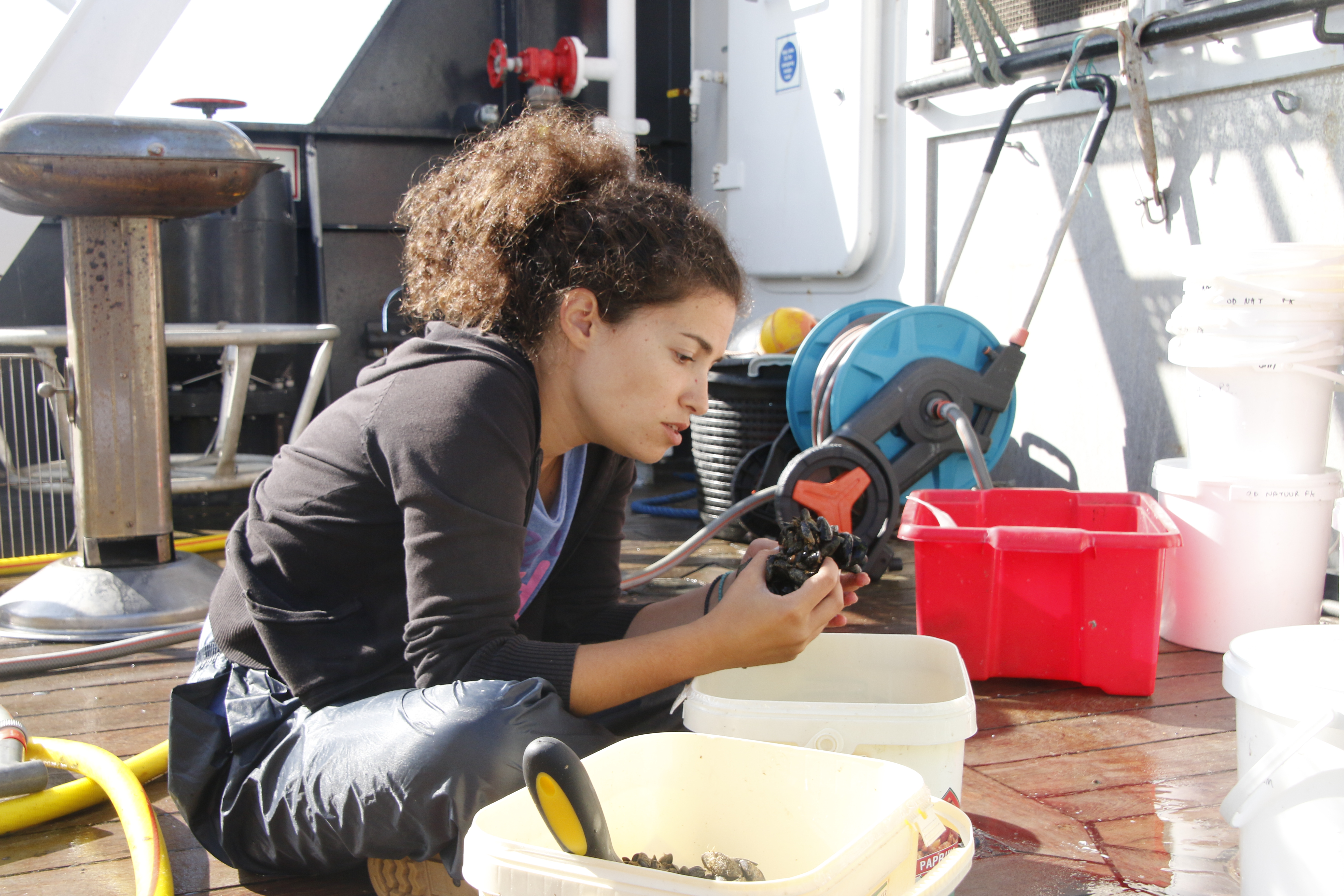
Food Web Structure
In the first part of the study, the food web structure of the colonising assemblages along the depth gradient of an offshore wind turbine, its erosion protection layer and the surrounding soft substrate were investigated. For this purpose, stable isotope analysis was performed on the organisms collected from the different zones. Stable isotopes are alternative forms of chemical elements (carbon and nitrogen in this case) with different molecular weights, that are found naturally. Their analysis is used to trace the flow of energy through food webs and assess trophic levels.
The results showed that structural community differences and associated differences in food web structure occur in different depth zones. The highest complexity was found at the erosion protection layer and the surrounding soft substrate, where organic matter accumulates. A species-specific study supported these results and demonstrated that the organisms occurring in these two zones exploited a wider range of resources compared to the organisms found higher up at the turbine. Most of the investigated invertebrate species were found to be trophic generalists, with depth-specific resource use strategies. Resource partitioning was detected both between and within the assemblages, contributing to the co-existence of species within and across the depth zones.
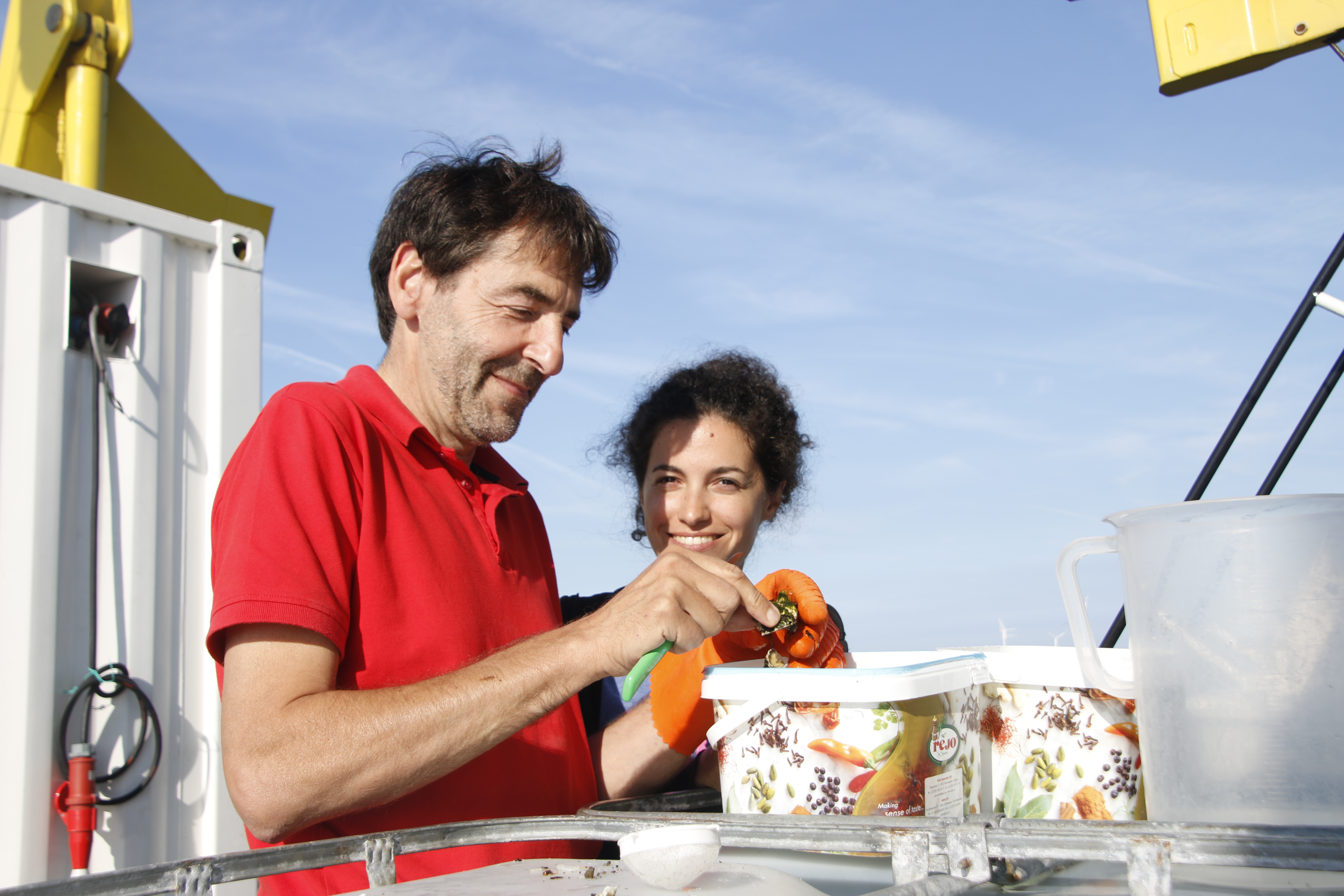
Carbon Assimilation and Primary Productivity
The second part of the study quantified the carbon assimilation by colonising assemblages that typically occur at offshore wind turbines. The results indicated that the blue mussel Mytilus edulis showed the highest carbon assimilation per unit of biomass, while the local amphipod Jassa herdmani population as a whole assimilated the highest amount of carbon. These species contributed the most to the local consumption of the primary producer standing stock (phytoplankton, or ‘vegetable’ plankton), since their assimilation was ca. 97 % of the total faunal carbon assimilation. The results of this experiment were upscaled to the total number of all the currently installed turbines in the Belgian part of the North Sea, leading to an estimated 1.3 % of the local annual primary producer standing stock that is grazed upon by M. edulis and J. herdmani. Also when the amount of carbon is taken into account that is not assimilated by the soft sediment fauna due to the loss of their habitat by the installation of offshore wind turbines, the data suggest that the total carbon assimilation increases remarkably in presence of offshore wind turbines and their colonisers.
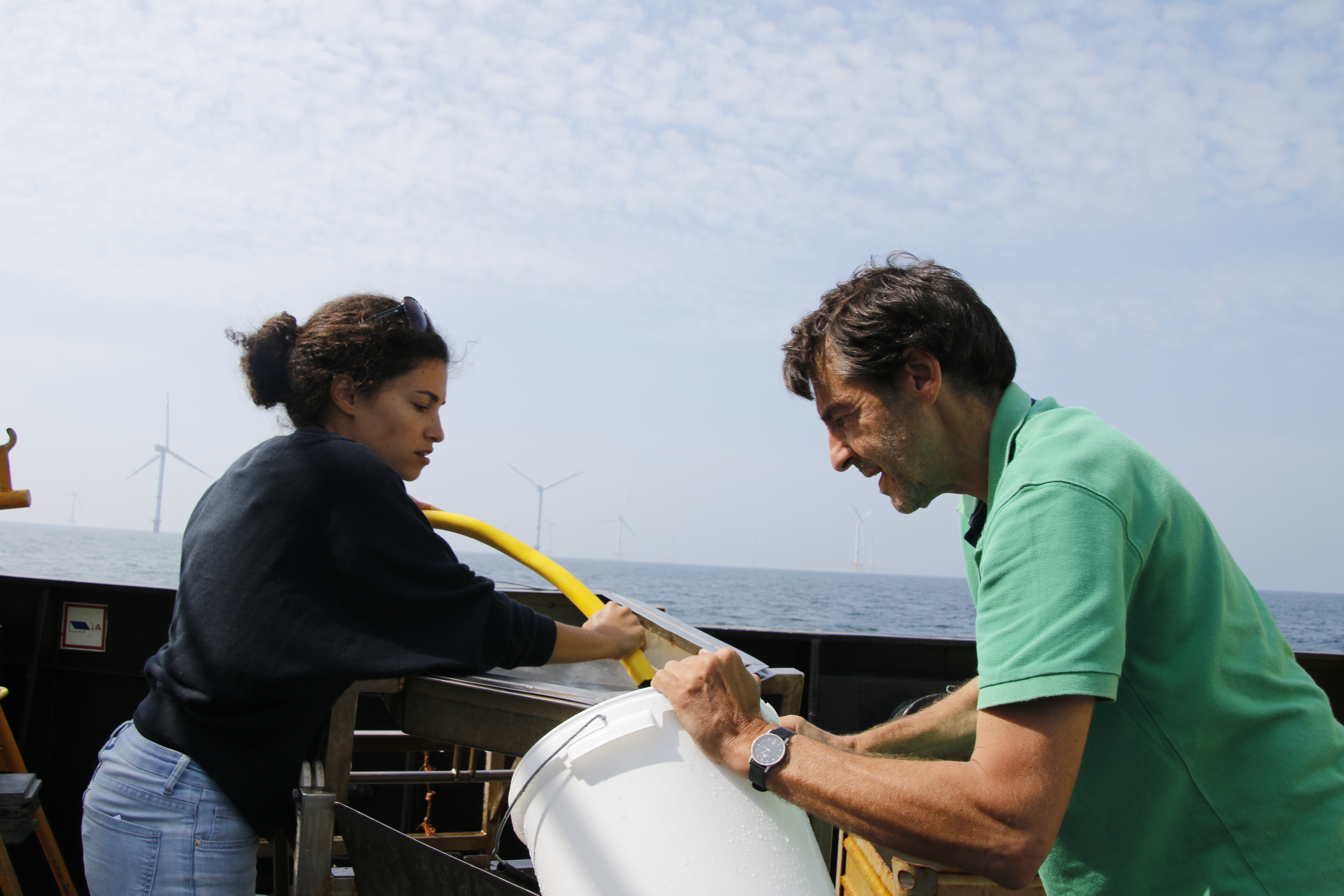
Fish
The feeding ecology of fish species that are attracted to offshore wind farms was also studied. To this end, stomach content and stable isotope analyses were performed to respectively investigate the short- and long-term dietary composition of a selection of abundantly present fish species. Species that are highly associated with the erosion protection layers, living on and/or near the basis of the wind turbines (shorthorn sculpin Myoxocephalus scorpius, pouting Trisopterus luscus and Atlantic cod Gadus morhua), appeared to use these artificial reefs as feeding grounds for a prolonged period, feeding on the abundant and energy-rich colonising species J. herdmani and Pisidia longicornis (long-clawed porcelain crab). Horse Mackerel Trachurus trachurus was shown to feed only occasionally on the colonising fauna, using the artificial reefs as oases of enhanced resources. These dietary results confirm the hypothesis that their local production could potentially be increased. However, this study did not support such statement for truly pelagic fish species. The Atlantic mackerel Scomber scombrus for instance did not appear to use the artificial habitats of offshore wind farms as feeding grounds at all. The analyses for this species indicated a diet based on zooplankton.
After a scientifically highly qualitative and visually very clear presentation of her thesis ‘On the food-web ecology of offshore wind farms, the kingdom of suspension feeders’ (online and live streamed on YouTube due to Covid-19 restrictions), prof. dr. Steven Degraer and prof. dr. Jan Vanaverbeke (RBINS, UGent) and the members of the Examination Commission (president: prof. dr. Ann Vanreusel, UGent; secretary: prof. dr. Tom Moens, UGent) proudly attributed the title of Doctor in Science – Marine Science to Ourania (Ninon) Mavraki (formerly Master in Marine Biology, University of Patras, Greece) on Monday 18 May 2020.
Congratulations Ninon!
